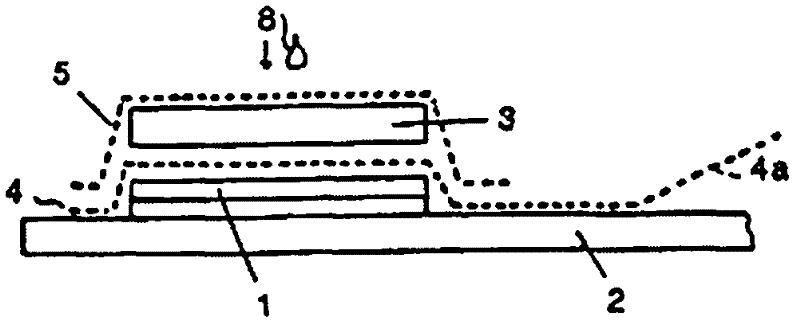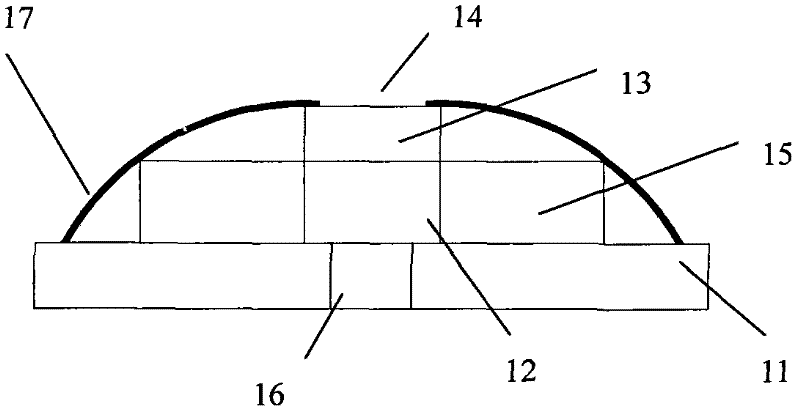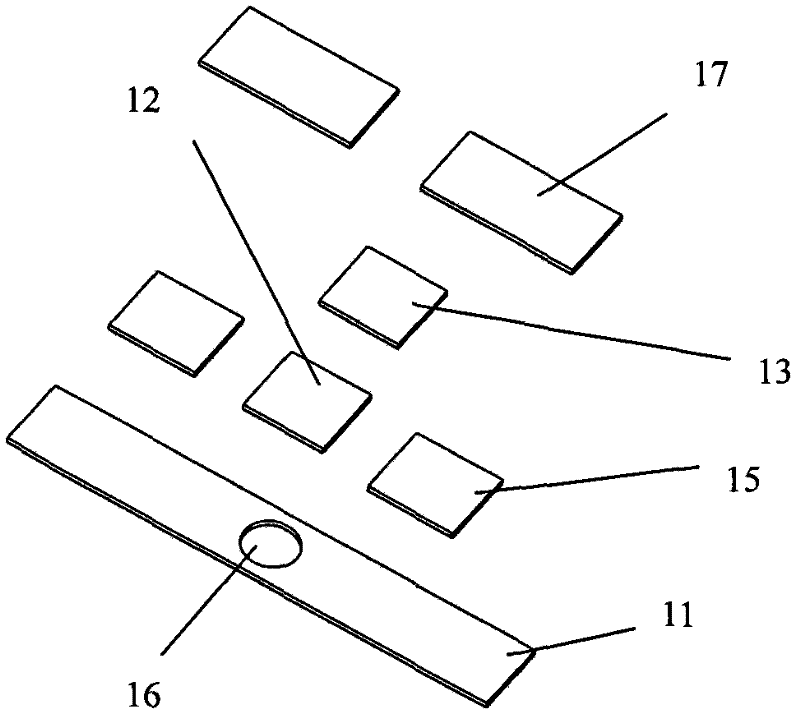Detecting test paper
A technology for detecting test strips and reaction layers, which is applied in the field of clinical testing, can solve problems such as contact with testers, pollute testing instruments, and pollute the environment, and achieve stable test results
- Summary
- Abstract
- Description
- Claims
- Application Information
AI Technical Summary
Problems solved by technology
Method used
Image
Examples
Embodiment 1
[0045] Embodiment 1 A kind of dry chemical test paper of the present invention
[0046] Dry chemical detection test paper of the present invention, as Figure 4 As shown, the reaction layer 12 is adhered and supported on the bottom plate 11, and the other side of the reaction layer relative to the bottom plate is covered with a sample application layer 13, and a sample application port 14 is provided on the sample application layer. Both ends of the sample application layer 13 partially cover the liquid-locking component 15 . There is a detection window 16 at the bottom plate opposite to the reaction layer 12 . The adhesive sheet 17 is continuously adhered and pressed against the sample application layer, the liquid-locking part and the bottom plate. The bottom plate 11 is made of PET material with a thickness of 0.35 mm. The reaction layer 12 is made of nylon membrane material, with a thickness of 0.05mm. The sample loading layer 13 is made of glass fiber polymer material...
Embodiment 2
[0047] Embodiment 2 Different sample additions detect cholesterol on the dry chemical test paper of the present invention
[0048] A whole blood solution was prepared with a cholesterol concentration of 150 mg / dl, wherein the sample had a hematocrit (HCT) concentration of 42%. 15 μl, 20 μl, 30 μl and 40 μl of the above whole blood solution were respectively taken and dropped onto the dry chemical test paper described in Example 1 of the present invention for detection. When the amount of the sample reaches 20 μl, the absorbance of the reaction layer test paper of the dry chemical test paper described in Example 1 of the present invention reaches saturation. Sample volumes of 30 μl and 40 μl were considered excessive. The test results show that the dry chemical test paper of the present invention is not affected by the amount of sample added, and can well absorb excess samples. The test results are stable and accurate. The test results are shown in Table 1.
[0049] Table 1...
Embodiment 3
[0051] Example 3 Different sample volumes are affected by the HCT concentration experiment
[0052] Whole blood solutions with hematocrit (HCT) of 30%, 42%, and 55% were prepared respectively, and were dropped onto the dry chemical test paper described in Example 1 of the present invention for detection. The sample volumes were 15ul, 20ul, 30ul and 40ul respectively. When the amount of the sample reaches 20 μl, the absorbance of the reaction layer test paper of the dry chemical test paper described in Example 1 of the present invention reaches saturation. Sample volumes of 30 μl and 40 μl were considered excessive. The results show that the use of the dry chemical test paper of the invention is not affected by the hematocrit or the amount of sample added, and the detection results are stable and consistent. The results are shown in Table 2 to Table 4.
[0053] Table 2
[0054]
[0055] table 3
[0056]
[0057] Table 4
[0058]
PUM
| Property | Measurement | Unit |
|---|---|---|
| thickness | aaaaa | aaaaa |
| thickness | aaaaa | aaaaa |
Abstract
Description
Claims
Application Information
 Login to View More
Login to View More - R&D
- Intellectual Property
- Life Sciences
- Materials
- Tech Scout
- Unparalleled Data Quality
- Higher Quality Content
- 60% Fewer Hallucinations
Browse by: Latest US Patents, China's latest patents, Technical Efficacy Thesaurus, Application Domain, Technology Topic, Popular Technical Reports.
© 2025 PatSnap. All rights reserved.Legal|Privacy policy|Modern Slavery Act Transparency Statement|Sitemap|About US| Contact US: help@patsnap.com



